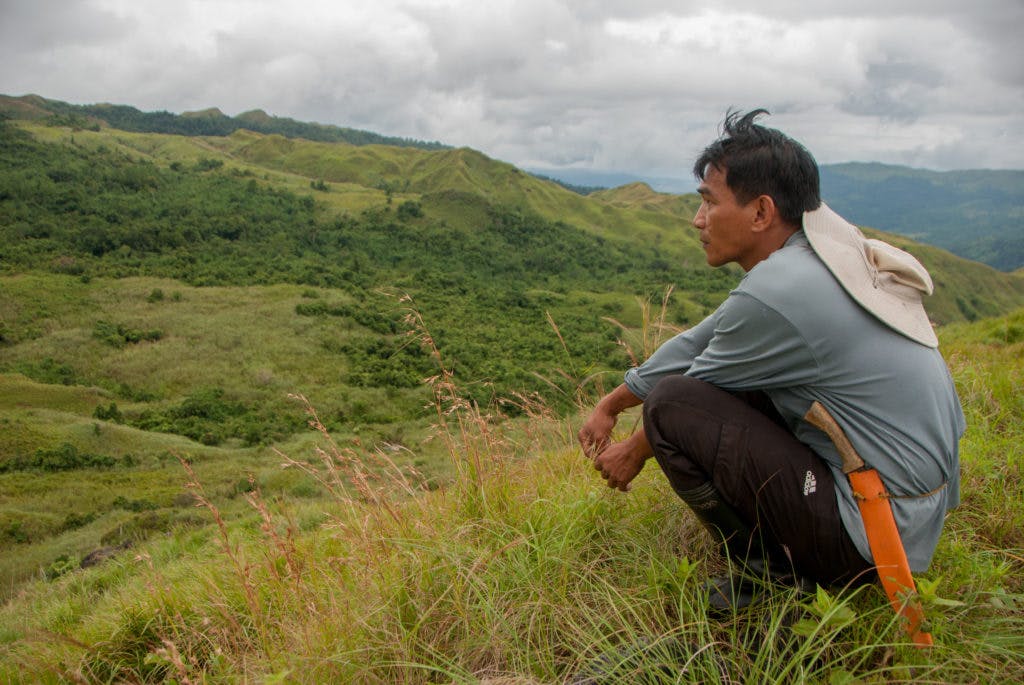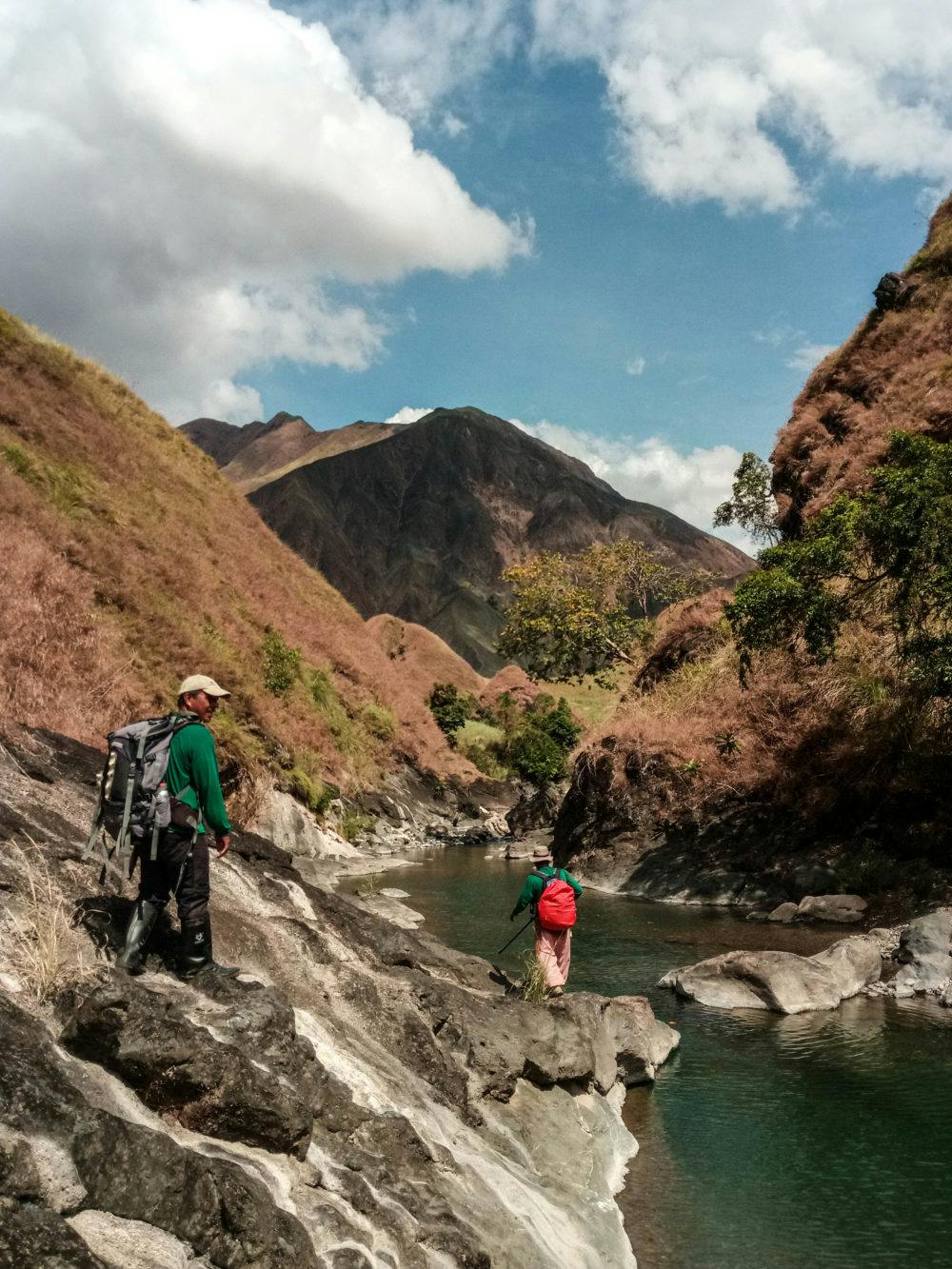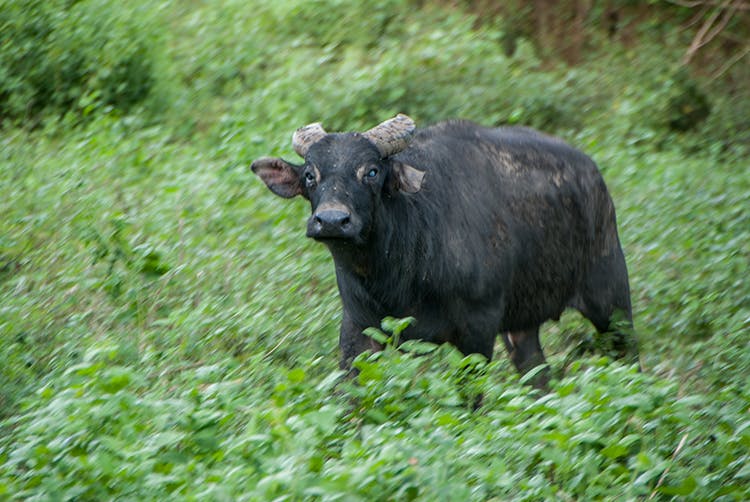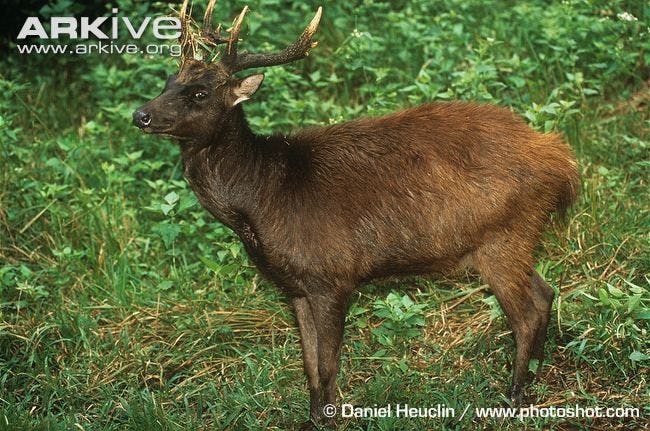mounts iglit-baco natural park
The Heart of Mindoro Island
Mounts Iglit-Baco Natural Park, first established as a protected area in 1970, is in the heart of Mindoro Island in the Philippines. The remote and mountainous park is part of the Philippines Biodiversity Hotspot and forms part of several Key Biodiversity Areas—places that are critical for the survival of unique plants, animals and fungi.
The most iconic species in Mounts Iglit-Baco Natural Park is the Critically Endangered Tamaraw, a wild dwarf buffalo found only on Mindoro. Around 500 individuals, about 80% of the world’s population, live within the boundaries of the natural park.
Re:wild and its partners, the D’Aboville Foundation and the IUCN SSC Wild Cattle Specialist Group are working with the Protected Area Management Office for the natural park, with the DENR’s Tamaraw Conservation Program and with local Indigenous peoples to protect and restore the natural park and to ensure the recovery of the Tamaraw.

Keeping the park wild
In 2018, the Government of the Philippines redeclared Mounts Iglit-Baco a natural park, committing to protect its rich biodiversity and mandating the development of a comprehensive conservation management plan for it within one year.
In 2019, Re:wild, working with the D’Aboville Foundation, IUCN SSC Asian Wild Cattle Specialist Group, the Protected Area Management Office for the park and DENR’s Tamaraw Conservation Program facilitated developing a 10-year protected area management plan for Mounts Iglit-Baco Natural Park. The plan takes a holistic approach to managing the park, helping Tamaraw and other species to recover and thrive while recognizing the culture, needs and rights of Indigenous peoples. The park overlaps with the territories of the Indigenous Buhid and Tau-Buid tribes, two of the eight ethnolinguistic groups of Mindoro. The management plan combines species and habitat conservation in the natural park, the rights, cultural and development needs of its Indigenous residents, and ecosystem restoration and sustainable use.

In 2020, Re:wild received a prestigious Darwin Initiative grant. It focuses on helping the Tau-Build receive official recognition of their ancestral domain, integrating the rights of the Tau-Buid with the conservation goals of the natural park, and recovering and restoring the shared lands of the Tamaraw and the Tau-Buid.
Alongside its work with Indigenous peoples, Re:wild is also working with its partners to support many other aspects of the management plan including:
biodiversity survey and monitoring,
training and equipping rangers,
facilitating new approaches to preventing wildlife crime,
providing ongoing support to staff of the natural park Management Office and the Tamaraw Conservation Program.

Beyond Tamaraw
Mounts Iglit-Baco Natural Park and the surrounding areas provide important habitat for many of the Endangered, Vulnerable and endemic species that live on Mindoro Island.
The Ilin Island Cloudrunner, a shy tree-dwelling rodent, is one of Re:wild’s Top 25 most wanted lost species and is known from just one individual found on Ilin island, just off the coast of Mindoro, in 1953. Scientists are hoping to investigate some unverified sightings of a cloudrunner-like animal to learn whether this species, or a related one, could be hiding in the lowland forests in and around Mounts Iglit-Baco Natural Park.
The Vulnerable Philippine Brown Deer is a forest-dwelling species native to the Philippine islands. Philippine Brown Deer are hunted extensively throughout their range for meat, hides and trophies; and nationally the population has decreased by more than 30% over the last two decades. However, it still survives in Mounts Iglit-Baco Natural Park and will benefit from the planned improved management and habitat restoration.
Oliver’s Warty Pig, also known as the Mindoro Warty Hog, is found only on Mindoro Island and is listed as Vulnerable on the IUCN’s Red List of Threatened Species. Little is known about the pig, but its presence has been confirmed in the Natural Park, where like the Tamaraw, it shares its forest and grassland habitats with local Indigenous peoples.

The Critically Endangered Mindoro Bleeding-heart Pigeon—a beautiful brown, blue and red bird—is a species much sought after by birders,and is found only on Mindoro Island. Once common and widespread, there are now likely no more than 250 mature individuals left, mainly as the result of deforestation. There have only been four confirmed sightings of the bird since 1980, but good habitat for the species still exists in the lowland forests in and around the natural park.

The Mindoro Pallid Flying Fox and the Mindoro Stripe-faced Fruit Bat were discovered in 2008 and 2007, respectively, on Mount Siburan in the Iglit-Baco Mountains Key Biodiversity Area on Mindoro Island. Recently, both species were observed in the Mounts Iglit-Baco Natural Park. Both have very small and fragmented population and are listed as Endangered.
Only up to 2,500 Mindoro Imperial-pigeons are left in the world, all on the island of Mindoro. Both hunting and deforestation have caused this species to decline, shifting its IUCN Red List status from Vulnerable, to Endangered, but it is still present in the natural park.


